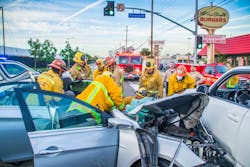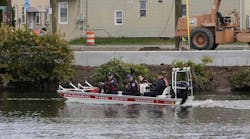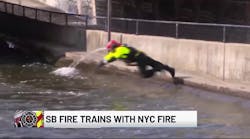Over the past years, the U.S. fire service has become more and more involved in the delivery of emergency medical services. From basic first aid training to advanced levels of paramedicine, fire departments that don’t offer EMS services are becoming fewer and fewer. With this increase in training and integration, departments should include medical treatment into technical rescue tactics. Patient-based extrication is just that: patient treatment, stabilization and removal that are based on the presentation of signs and symptoms that are found during the initial patient assessment.
The ABCs
During all technical rescues, tactics should be dictated by patient condition. This starts with a good physical examination by first-arriving rescuers. A simple ABC approach can dictate the next actions that must be addressed: Airway, breathing and circulation assessments are as basic as they sound. Does the patient have a patent and sustainable airway? Is the patient breathing? Does the patient have a carotid or radial pulse present? If the answer is no to any/all of these questions, the extrication will be put on delay while the patient’s medical problems are addressed.
Whether these tasks are completed by the first engine company or by an assigned ambulance crew, the number one priority is to stabilize the patient. Once the ABCs are tackled, a rapid trauma assessment should be completed. The head-to-toe examination that evaluates for life-threatening injuries is essential for patient stabilization and for the discussion that pertains to the mode of operation for the extrication of the patient.
If the patient seems stable, more time can be taken during the extrication operation. If it’s found that there’s an immediate life threat, the pace of work should be increased.
Communicate & understand
No matter the mode of operation, communication and understanding between the provider who is caring for the victim and the extrication leader are essential. The communication must include patient condition, stability, and needs of care and protection of the patient. This information can help to direct the efforts of the extrication operation.
Communication also is needed between the extrication leader and the patient care provider. This means an explanation of the process of removal and the needed safety precautions.
It might seem trivial to provide discussion about this process. It isn’t. It’s essential to talk about and practice the communication, and it all starts on the training grounds.
Advances in today’s training props should be applied to technical rescue training. An example of this is placing a low-fidelity manikin inside of a crumpled car. A manikin that can be used for advanced airway placement increases the realism of the training. Adding in a missing limb or an uncontrolled bleeding prop that’s built from some Halloween store items and IV tubing takes the training to the next level.
Too often, we take firefighters to a junkyard to “cut cars.” Although the initial tool familiarization is important, the application of the techniques is even more important. These techniques will be under a lot more stress when firefighters are faced with a dying patient.
Difficult conditions
The time to up the ante on your training is now. Just like the inclusion of EMS into the fire service, it’s time for patient care and conditions to dictate tactics in technical rescues.
From the first-arriving engine company to the last ambulance to turn up, everyone on scene of a rescue must work toward the goal of patient care. Adding patient assessment into your department’s extrication training is where it starts and will lead to a better organized response when the conditions on scene are difficult and the outcome looks grim.
Don’t be afraid to challenge yourself in the training. Throw in some difficult patient findings or add in a misting fog nozzle to simulate raining conditions. Even the slightest variable can challenge the most experienced rescuer.






